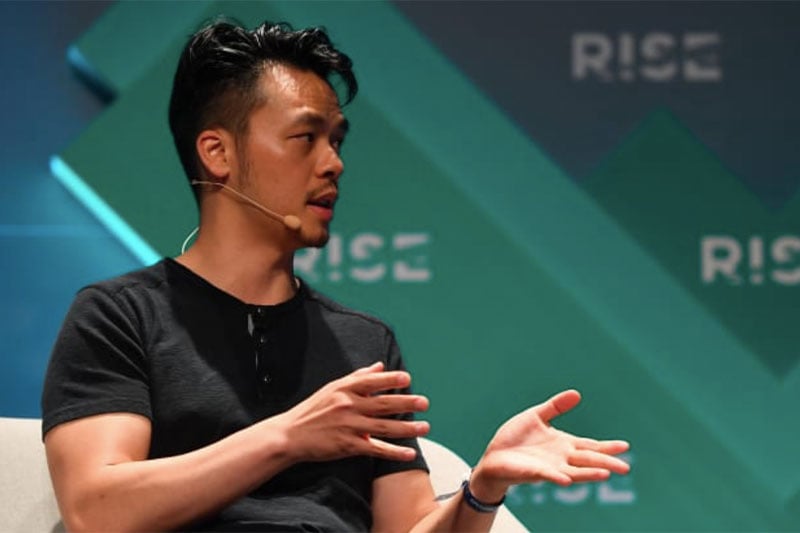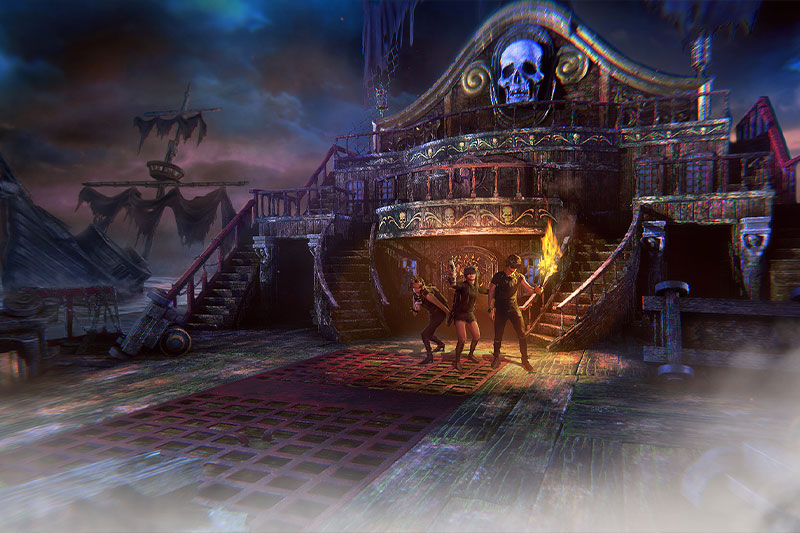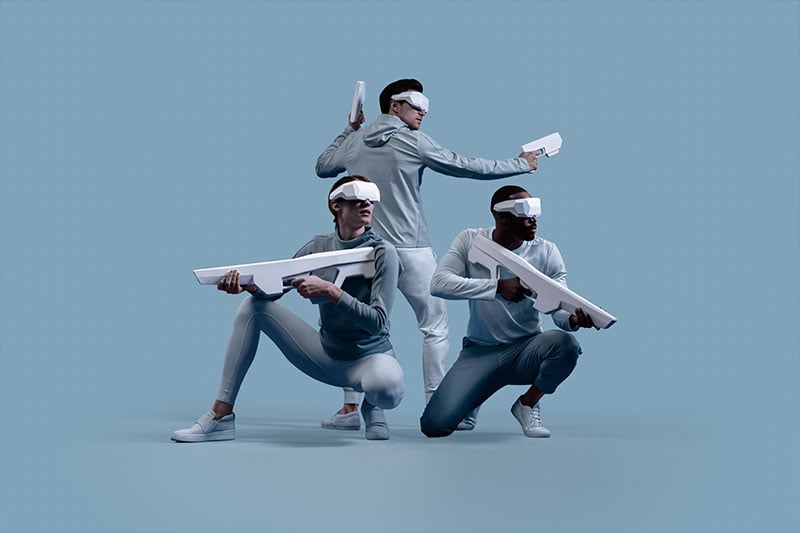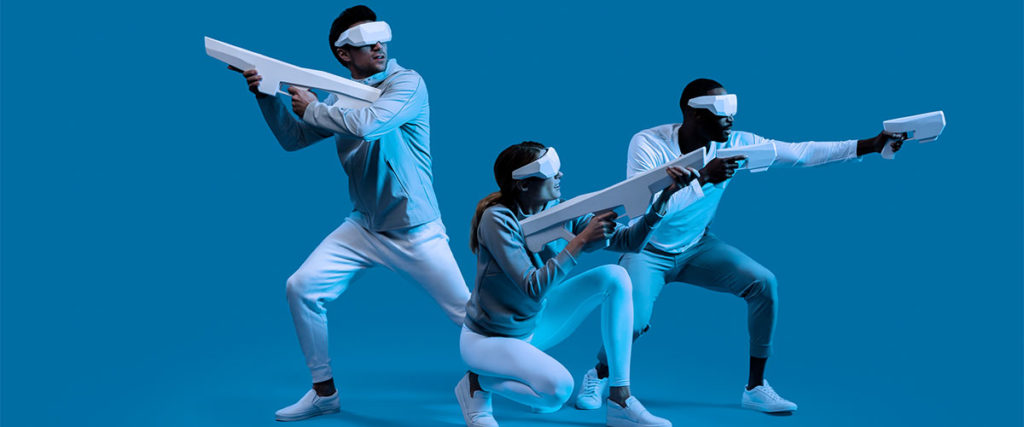When Sandbox VR founder Steve Zhao invested his life savings into his virtual reality business, he took the biggest gamble of his life. Three years on, it’s more than paid off.
Sandbox VR is a virtual reality (VR) gaming sensation – one the likes of Will Smith, Kevin Durant, Katy Perry and Justin Timberlake have invested in. Founded by Steve Zhao, a man who’s been building games since he was 13 years old, this retail-based virtual reality game launched in Hong Kong in 2017, going viral on Facebook thanks to its incredible, immersive experience – and has since landed a USD 68 million Series A funding round led by Silicon Valley venture capital firm Andreessen Horowitz in 2019. Just imagine a fast-paced shootout against hyper-realistic zombies, a journey into space, or even a Star Trek mission investigating a distress call as you stand shoulder-to-shoulder with your friends in a green room equipped with 3D precision body trackers, VR headsets and Hollywood motion capture cameras – and you get the drill. Featured by CNBC, TechCrunch and Forbes, Sandbox VR is capturing the hearts and imaginations of millennials across the world, scaling already to nine locations in major cities across America and Asia with another three on the way. Steve Zhao told us his story.

Photo Credits: RISE
Three years ago, Steve was facing a pivotal moment in his career. Fast running out of financial runway for his firm Sandbox VR – and with no hopes of landing further funding, he had two options: admit defeat and wind up the company, or double down and invest everything he had. Harking back to that crucial decision, he recalls, “I remembered this quote from Jeff Besos on how to minimise regret. You take a pivotal point in your life and the way to make a decision is to ask, which one will you regret less?” With USD 500,000 in the bank – the entirety of his retirement savings, he contemplated, “I could close this company now, have a bit of a nest egg, find a job in the US, maybe have a nicer car. But, when I’m 80 years old, would that matter more? Or, would I rather put all this money in, we try to change the world, and maybe we fail, but I have a great story to tell my grandkids?”
Assembling his hardy team of six, Steve told them he was willing to put all his money into the firm to buy them another six months, but it would mean working seven days a week and taking an extra pay cut. “I hadn’t been paying myself a salary since the company had started, so it didn’t matter to me. But, they had a lot riding for them. One of the guys wanted to start a family and he had to tell his wife that he couldn’t do that. It was hard. We had to all go at this together; luckily they all agreed.”
You might also like The Billion Dollar Industry Growing Out of Bedrooms Around the World

With just six months to make Sandbox VR a reality, the team set to work. “We called it the ramen noodle life. You just worked. You ate fast; you tried to get stuff done. There was immense pressure. People told us we were probably done, but we persevered, and we went from a technology demo in February 2017 to a completed full-stack engineering product, a fully playable experience, and a store in four months.” Launching in June 2017, hidden away in a scrappy back-alley building next to a few gentlemen’s clubs, they waited nervously for their first customers. Sales were low, although the few that did turn up loved it. “They were like, ‘I’ve never tried anything like this in my life before,’” Steve relates. Then, a news reporter picked up the story, which went viral on Facebook, netting Sandbox VR 1.5 million views. “All of a sudden, our phones wouldn’t stop ringing. I remember when I started this business, one of my buddies who’d created one of the first escape rooms in Hong Kong had said, ‘If you can get 60% of people to come to your location, you’ve got a good business.’ When Sandbox VR blew up, we basically had 100%, 100 days in a row. People were booking morning until night, weekdays, weekends. We had a couple of people change their flight tickets to come and play; they were skipping work to try it out. We had created a product-market fit.”

With personal VR consumer gadgets like Facebook’s Oculus Quest, Sony’s Playstation VR, and Samsung Gear VR already on the market – and VR market volume forecast to hit 98.4 million sales by 2023 according to Forbes, it begs the question, where does a VR retail-based gaming experience fit into the industry? “I don’t really think we’re competitors because we’re solving two different things,” Steve answers. Rather than simply creating as compact and mobile a headset as possible, he believes that Sandbox VR takes a more holistic approach, combining a multitude of technologies from custom controllers to haptic vests – even fans to simulate a windy environment – to create a fully immersive VR experience. “If anything, we hope that these headsets will continue to improve over time because it benefits their market and our market,” says Steve.

As for what’s next? He envisions a future where Sandbox VR could evolve to encompass a platform ecosystem where third-party developers could create and launch fresh VR content for consumers. “Right now, we’re focusing on games. But, what does it mean to focus on sports or concerts or festivals,” Steve asks. “In the next five to ten years, we’re going to see a lot more people being engaged on all axes. The whole immersion side of things will be exponentially better and it’s going to extend across different entertainment fields.” With ambitious plans to scale, they’ve recruited the former lead designer for Assassin’s Creed Michael Hampton as their creative director and are upgrading their existing hardware with lighter headsets, higher-resolution screens and more responsive finger tracking. “You can see your fingers move now,” Steve explains. “So, it just creates a much more realistic world. We hope to create facial gestures in the future. It’s basically adding a lot of different elements of immersion to triple the quality of it.” As the interview draws to a close, we delve into any regrets he might have – and ask if he would do it all again. He pauses, reliving the memories of breakneck workdays, hurried meals and sleepless nights. “Yeah,” he finally says. “I think I’m kind of crazy like that. This feels like a once-in-a-lifetime journey. Whether it’s successful or not, I’d do it again for the stories.”
Related Articles
Candy Crush Creator Talks on the Future of Mobile Gaming





